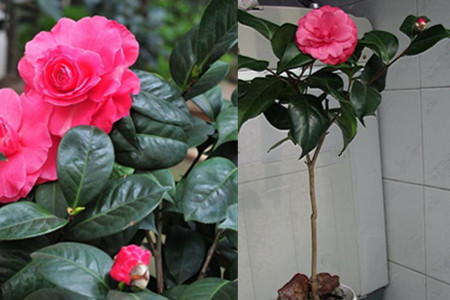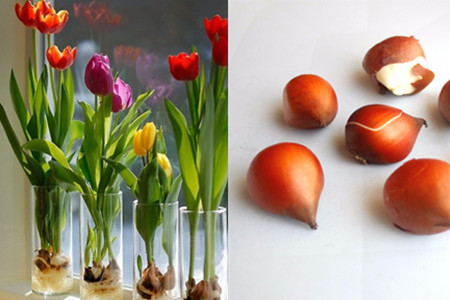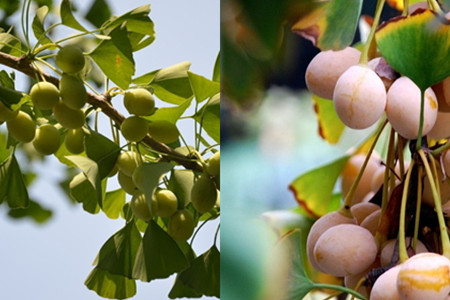How to hydroponically cultivate camellias can easily survive? the five cultivation steps must be done well.

Camellia is a kind of flower with a high degree of appreciation, whether it is cultivated in the yard or single plant indoors, the decorative effect is very good. The cultivation methods of camellias are generally divided into cuttings and hydroponics, and if they are cultured indoors, hydroponics will be more suitable. But for beginners, it is actually quite difficult to successfully hydroponically cultivate camellias at one time. If you want to improve the survival rate of hydroponic camellias, you must first learn the following five steps to make the branches of camellias take root as soon as possible.
The first step is to select hydroponic branches.
The branches of camellias used for hydroponic culture must be cut from healthy, pest-free branches, and choose the dark green and sturdy branches. It would be better to have a branch with spores on it, which has higher cellular activity, is more likely to survive when cultivated, and blossoms quickly after rooting. When pruning, pay attention to the completion of a knife as far as possible, to maintain the neatness of the incision.
The second step, deal with the fracture.
First spray some water on the fracture of the branch, and wrap it in carbendazim powder, then spray a little water again and wrap it in the nutritious soil. In this way, the fracture will be covered with carbendazim powder and nutrient soil, and then put the treated branches flat for about half an hour, so that the fracture can fully absorb nutrients. Carbendazim powder can kill the bacteria at the fracture and prevent the roots from rotting rapidly, while nutritious soil can provide camellias with sufficient nutrients for rooting.
Step three, prepare the container and water.
The container used to hold the camellia branches should be narrow, so that the branches can stand on the support of the mouth of the bottle. If there is no narrow container, you can also put a layer of pebbles at the bottom to help the branches stand upright in the water. And the water used for hydroponic camellias must be tap water, the best depth of water is 5cm-10cm, it is not easy to be too deep, so as not to soak the branches too much, which will also lead to branch rot.
The fourth step is to fix the branches and add nutrient solution.
Put the prepared camellia branches into the water and gently lean against the fracture position with a few pebbles to fix the camellias in the water. If there are no pebbles, you can also use a foam board to insert the branches into the foam board to help fix it. After fixing, remember to drop a few drops of hydroponic plant-specific nutrient solution into the water, so that the water can contain enough nutrition to prevent camellias from withering or rotting due to lack of nutrition.
The fifth step is to change the water regularly and clean the roots.
Don't think that the branches of camellias can be put in. We still need to take the branches out every seven days or so and rinse the mucus off the surface with clean water. Because if the root is wrapped in this mucus, it will hinder the absorption of nutrients, and in the long run, the branches will lack nutrition and cannot take root. At the same time, all the water in the container needs to be replaced with clean tap water, and re-dripped into the nutrient solution, and then put the branches back.
Through these five steps of hydroponic cultivation of camellias, most of the camellias can be seen to have tiny roots growing in about ten days, and the roots will become thick after a month, so that the camellias can be cultivated and survived. In the daily maintenance, we should also pay attention to putting the camellia branches in a position where there is plenty of light but will not be exposed to the sun before taking root, which can also improve the success rate of camellia hydroponics.
Is the hydroponic culture of asparagus easy to survive? key points of hydroponic culture of asparagus
Asparagus, also known as Yunpianzhu, belongs to the family Liliaceae. Its posture is light, the leaves are green all the year round, full of elegant posture, so it has won the love of many people. When planting asparagus, some people like soil culture and some people like hydroponics. Is hydroponic asparagus easy to feed? What are the main points of hydroponic asparagus?
Key points of hydroponics:
1) sampling: select the soil culture plants with good shape and vigorous growth, wash the soil and cut off the rotten roots and plant them in the hydroponic container, and add water to the root system of 1/3-1/2.
2) maintenance: start to change the water every 2-3 days, remove the rotten roots in time, after two weeks, the roots basically adapt to the environment and have grown water roots, and then change the fresh water every 5-6 days. When the plants show strong growth potential, change to the nutrient solution culture, the nutrient solution should be shallow rather than deep, replenish it every 10 days or so in summer, when the sediment of the nutrition industry is increased to renew the nutrient solution. Generally update once every 1-2 months, avoid strong light in summer, and the motivation should be placed in a warm and strong place. Keep the room temperature above 5 degrees Celsius, spray water to the leaves when the air is dry, maintain high air humidity and keep the branches and leaves clean.
Hydroponic asparagus is not difficult to feed, whether it can be full of vitality depends on whether we flower friends can be familiar with the key points of hydroponic culture, and then carefully hydroponic cultivation of asparagus. The above introduction is the main points of hydroponic asparagus. I hope it will be helpful to flower friends.
Money tree hydroponic culture method, completed in 5 steps
Step 1 of the method of hydroponic culture of money tree, bottle preparation of hydroponic culture
Prepare a bottle for water to hold the money tree, preferably with a smaller mouth and a slightly higher body, so that the money tree is not easy to pour and is conducive to growth, and glass bottles such as beer bottles are the most suitable.
2. Selection of hydroponic branches.
From a pot of well-growing money trees, cut a section of money branches about 30 centimeters in length and use them as water cuttings.
3. Soak in rooting water
You can prepare the rooting water to soak the branches for 3 seconds for 5 seconds, which can take root more quickly. if there is no rooting water, soak in water and then put it in a cool place to dry for half a day, and then put it in a bottle.
4. The branches are inserted into the bottle
Add the necessary amount of water to the bottle, the amount of water is about 5 cm, not too deep, and then let it grow quietly. After about a month, you will see that the tree grows roots of the length below, so that it can be transplanted to the soil for cultivation, or continue hydroponics, but grow more slowly.
5. Waiting for rooting
As long as the indoor temperature is suitable, the money tree can be inserted in the water at about 25 degrees Celsius. After waiting for about a month, the root system will be sent out at the bottom of the rhizome of the money tree, and roots, root balls and new branches will grow slowly.
Matters needing attention: 1. Avoid picking up the bottle to check the rooting
In the process of water insertion, don't always look for roots, especially pick up the bottle to check, this will affect the money tree to take root.
2. Soak in rooting water as much as possible
Before money water insertion, it is best to soak 3Mel for about 5 seconds with rooting water, so that the survival rate of water insertion will be greatly improved.
3. Choose healthy branches
Be sure to choose the mother plant that grows well as water cuttings, so that it is easy to survive.
- Prev

The method of hydroponic culture of tulip bulbs can grow better by changing water in time.
Tulip is a plant of the genus Tulip of Liliaceae. it is the national flower of Turkey, Kazakhstan and the Netherlands. Tulip is a long-sunshine flower with a sexual preference to the sun and shelter from the wind. Its planting methods are divided into soil culture and water culture. Let's introduce how to do it in water culture.
- Next

It is necessary for ginkgo biloba seed planting method to accelerate germination in advance.
Ginkgo biloba is a deciduous tree of Ginkgo biloba family. The fruit of ginkgo tree is commonly known as ginkgo, so ginkgo biloba is also known as ginkgo tree, and its seed is the core peeled out from the fruit, so how should the seed of this plant be planted?
Related
- Fuxing push coffee new agricultural production and marketing class: lack of small-scale processing plants
- Jujube rice field leisure farm deep ploughing Yilan for five years to create a space for organic food and play
- Nongyu Farm-A trial of organic papaya for brave women with advanced technology
- Four points for attention in the prevention and control of diseases and insect pests of edible fungi
- How to add nutrient solution to Edible Fungi
- Is there any good way to control edible fungus mites?
- Open Inoculation Technology of Edible Fungi
- Is there any clever way to use fertilizer for edible fungus in winter?
- What agents are used to kill the pathogens of edible fungi in the mushroom shed?
- Rapid drying of Edible Fungi

